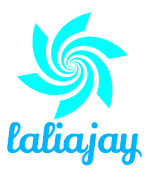Image Converter
For Video editing ,website Design on blogger , You tube Thumbnail, banner and poster design ,pdf design and creation ,Instagram reel making - Contact us
Bulk Image to JPEG Converter: The Ultimate Tool for Efficient Image Format Conversion
In today’s digital age, image processing has become a crucial part of both personal and professional workflows. Whether you’re working in photography, graphic design, web development, or simply managing a large collection of images, the need to efficiently convert multiple images to a single format arises often. One of the most widely used image formats is JPEG (Joint Photographic Experts Group), which is popular for its balance between image quality and file size.
When dealing with large numbers of images, manually converting each file can be time-consuming. That's where a bulk image to JPEG converter comes into play. These tools allow you to batch process images and convert them into the JPEG format with just a few clicks. This article will explore the benefits of bulk image to JPEG converters, how they work, and the top tools available for this task.
What Is JPEG?
Before diving into bulk image converters, it's important to understand what the JPEG format is and why it's so widely used. JPEG is a lossy compression format designed for compressing digital images. It is particularly effective for photographs and realistic artwork where subtle variations in color and brightness are common.
The JPEG format achieves significant file size reductions by discarding some of the image data, specifically in areas that the human eye is less sensitive to. This compression helps in reducing storage requirements and making images load faster on websites or in digital media.
Why Convert Images to JPEG?
There are several reasons why you might want to convert images to the JPEG format, especially in bulk:
1. Smaller File Size
JPEG images are compressed, which results in smaller file sizes without a significant loss in visual quality. This is especially useful for managing large numbers of images or uploading them online.
2. Compatibility
JPEG is one of the most universally supported image formats. Virtually all devices, web platforms, and image editing software can open and process JPEG images, making it an ideal choice for compatibility across different systems.
3. Web Optimization
JPEG is often the preferred format for web use, as its small size allows for faster loading times. Websites with many images, such as e-commerce sites or portfolios, can benefit from converting high-quality images into JPEGs for quicker page loads.
4. Uniformity
If you are managing a large collection of images from various sources (e.g., scanned images, screenshots, or photos), converting them all into the same format—like JPEG—helps in maintaining consistency and ease of use across your digital library.
Benefits of Using a Bulk Image to JPEG Converter
When dealing with hundreds or thousands of images, manually converting each one can be extremely time-consuming. A bulk image to JPEG converter simplifies this process and provides several key advantages:
1. Efficiency and Time-Saving
A bulk converter allows you to select multiple images at once and convert them all to JPEG format in one operation. This is incredibly time-saving compared to manually converting each file individually.
2. Automation
Many bulk converters offer additional features, such as automatic resizing, renaming, or even applying compression settings to your images. These features further streamline your workflow and help maintain consistency across your files.
3. Customizability
Depending on the tool, you can often adjust various settings such as image quality, resolution, and compression level. This gives you control over the output, ensuring that the final JPEG images meet your needs.
4. No Need for Advanced Software Knowledge
Bulk converters are designed to be user-friendly, even for individuals without extensive knowledge of image processing software. Most tools feature simple drag-and-drop interfaces and require just a few clicks to complete the conversion.
5. Batch Conversion for Multiple Formats
While the primary goal is to convert images to JPEG, many bulk converters can handle multiple input formats like PNG, GIF, TIFF, BMP, and others. This flexibility allows you to work with various image types in one tool.
How Does a Bulk Image to JPEG Converter Work?
A bulk image to JPEG converter typically follows a straightforward process:
Select the Input Files: The first step is to choose the images you wish to convert. Most converters allow you to drag and drop images or select them via file explorer.
Choose Conversion Settings: Many converters allow you to customize the settings for the output images, such as the quality level (low, medium, high), compression settings, and resolution.
Initiate Conversion: Once everything is set, you simply click the “Convert” button, and the software processes all selected images at once.
Save the Output: After the conversion process is complete, you can select where to save the newly created JPEG images. The tool will usually organize the files into a single folder for easy access.













0 Comments